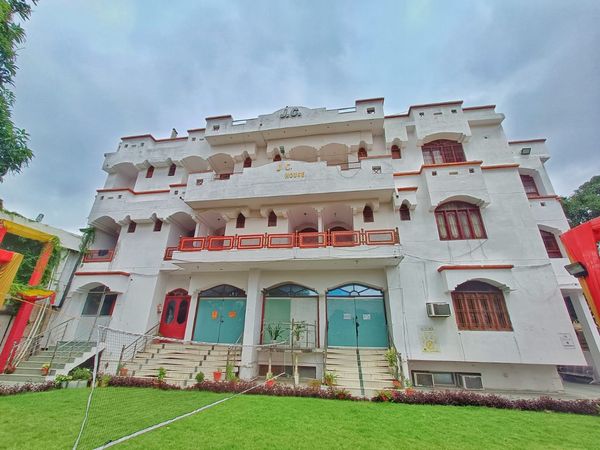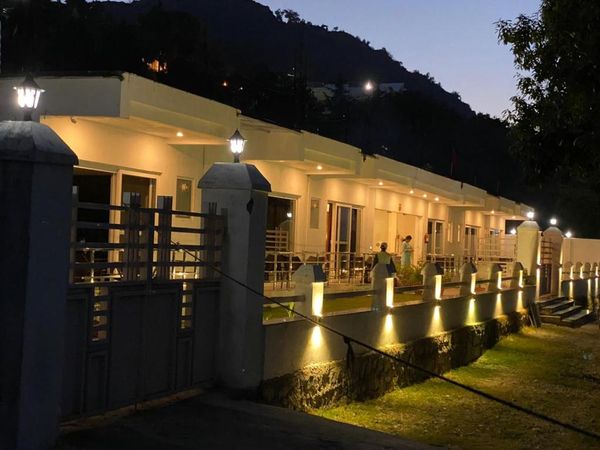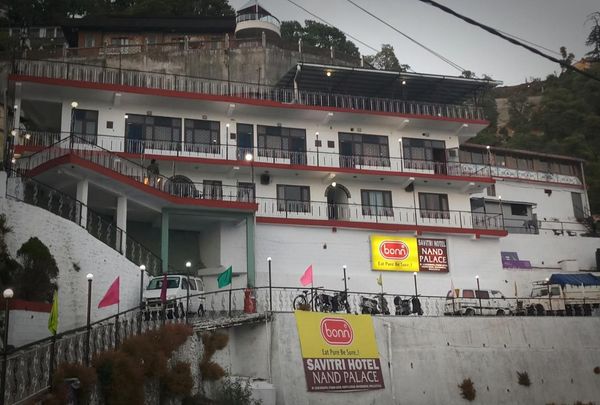Best Winter Treks in India – Top Snowy Trails for All Levels
 Mountains Curve
06 Aug, 2025
30 mins read
83
Mountains Curve
06 Aug, 2025
30 mins read
83
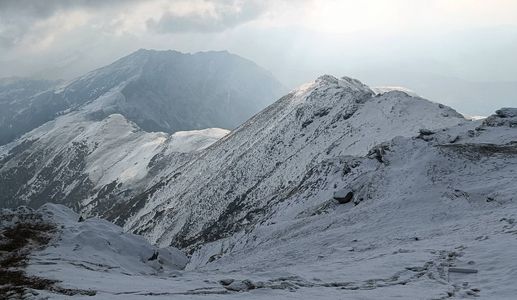
Imagine walking over fresh snow, your boots crunching softly on a snow-covered trail, surrounded by snow-laden forests and frozen water streams glistening in the winter sun. That’s the charm of trekking in the Himalayas during winters, when the landscape transforms into a winter wonderland draped in a magical snow blanket.
From December to February, some of the best trekking spots in winter open up across India, offering stunning snow-laden trails, peaceful campsites, and the chance to witness snowfall first-hand. These are the year's coldest months, with temperatures often dipping below freezing in high-altitude areas. In mid-altitude regions, temperatures average around 5–10 °C, but the chill intensifies as you climb higher, thanks to cold winds from the Himalayas.
Despite the challenges, snow adventures in India are gaining popularity — whether it's a weekend hike or a week-long expedition. With the right hiking boots, layered clothing, trekking pole, and awareness of weather conditions, even snow-covered easy winter treks become unforgettable journeys through a surreal landscape.
Top 10 Winter Treks in India
1. Kedarkantha Trek, Uttarakhand
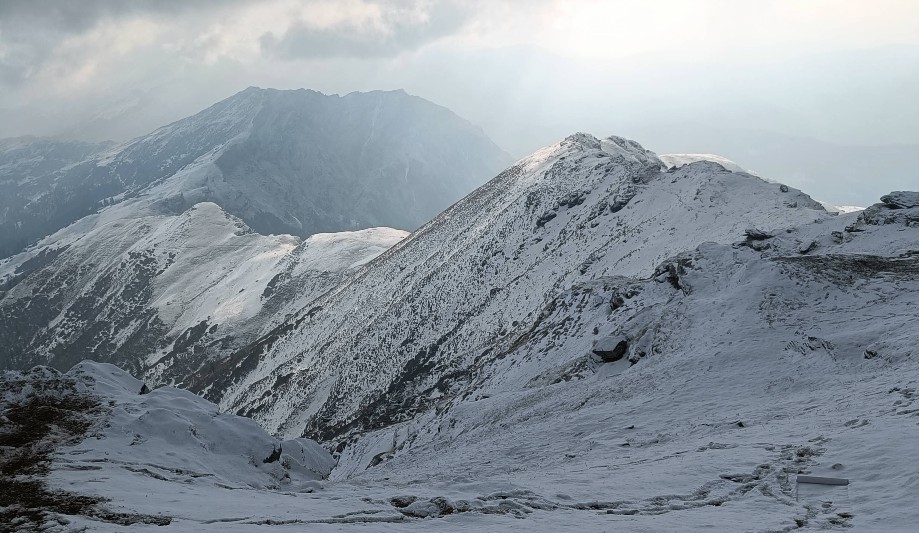
The Kedarkantha Trek stands out as one of the finest winter trekking adventures in Uttarakhand, offering a perfect mix of thrill and scenic beauty for both beginners and experienced trekkers. Located in the Govind Wildlife Sanctuary of Uttarkashi district in the Garhwal Himalayas, the trek climbs to a maximum altitude of 12,500 feet, offering stunning 360-degree views of peaks like Swargarohini, Bandarpoonch, Black Peak, and the Yamunotri and Ranglana ranges.
Starting from the scenic village of Sankri, about 200 km from Dehradun, the route typically spans 3 to 4 days and follows a circular hiking trail through snow-laden forests, alpine meadows, and untouched snowy terrain. Along the way, trekkers pass by the serene, frozen Juda Ka Talab and walk across open landscapes blanketed in snow.
One of the most memorable parts of the journey is the midnight summit push — a challenging yet rewarding climb that reveals breathtaking sunrise views over a snow-covered Himalayan landscape.
Popular during winters, especially from December to February, Kedarkantha offers a true snow adventure. With manageable difficulty, a gradual ascent, and incredible scenery, it’s no surprise this trek is among the most loved trekking spots in winter.
- Region: Govind Wildlife Sanctuary, Uttarkashi
- Max Altitude: 12,500 ft
- Duration: 5–6 days
- Difficulty: Easy to Moderate
- Highlights: Iconic summit view, snow-covered pine forests, Juda ka Talab, suitable for beginners
2. Brahmatal Trek, Uttarakhand
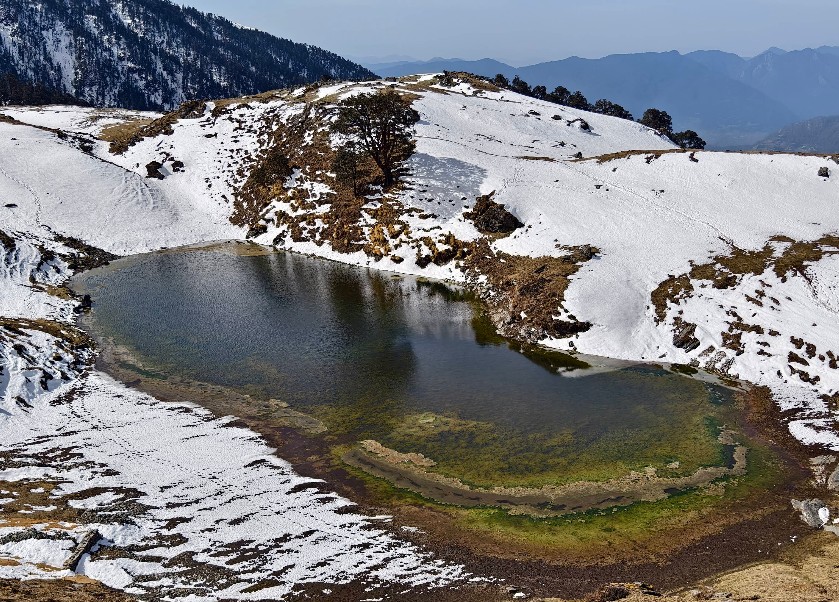
Tucked away in the Chamoli district of Uttarakhand, Brahmatal is a high-altitude alpine lake nestled at 10,190 feet, while the trek’s summit point — Brahmatal Top — rises to approximately 12,250 feet. This 5 to 6-day trek, including the scenic drive from Dehradun or Rishikesh, offers one of the most rewarding snow adventures in the Indian Himalayas.
Renowned as one of the best winter treks in Uttarakhand, Brahmatal is a favorite among both beginners and experienced trekkers. The trail unfolds through snow-covered forests, peaceful meadows, and serene ridgelines, eventually leading to frozen lakes and wide-open landscapes that feel straight out of a winter wonderland.
What makes this trek truly special is the chance to soak in mesmerizing views of iconic Himalayan giants — including Mt Trishul (7,120 m), Nanda Ghunti (6,309 m), and Chaukhamba (7,138 m). The summit viewpoint delivers a panoramic sweep of these snow-clad peaks under clear winter skies.
From December to February, the snow-laden trails and crisp mountain air make Brahmatal a perfect pick during the year’s coldest months. With proper hiking boots, warm layers, and a trekking pole, it’s an accessible yet unforgettable journey through some of Uttarakhand’s most dramatic winter landscapes.
- Region: Chamoli District
- Max Altitude: 12,200 ft
- Duration: 6 days
- Difficulty: Moderate
- Highlights: Alpine lakes, Mt Trishul and Nanda Ghunti views, forest campsites, ideal for scenic photography
3. Dayara Bugyal Trek, Uttarakhand
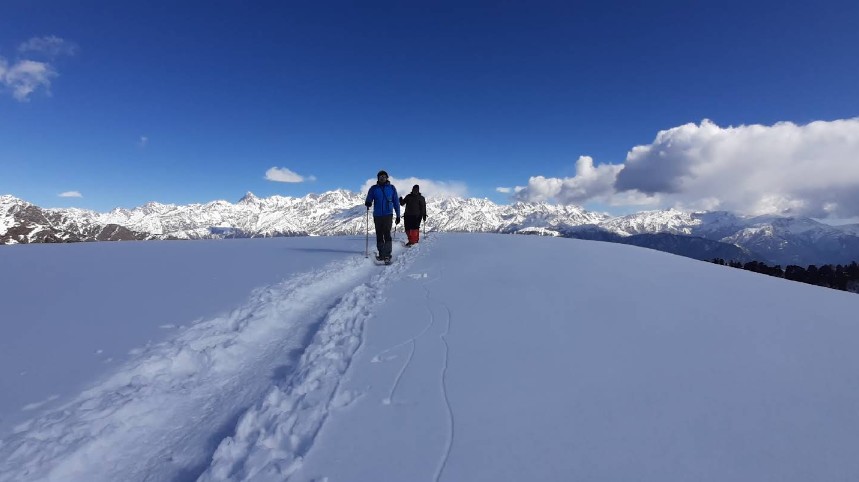
The Dayara Bugyal Trek is a captivating journey through one of Uttarakhand’s most scenic high-altitude meadows, located in the Uttarkashi district. Starting from the peaceful village of Raithal, this 22 km round-trip unfolds over 3 to 4 days, gently ascending to a height of approximately 12,000 feet. The route, known for its ease and accessibility, is ideal for beginners, families, and those looking to enjoy a calm, immersive Himalayan experience.
During winters, the entire landscape transforms into a pristine snow-covered expanse, with snow-laden trails weaving through forests and open meadows. As you move forward on this well-marked hiking trail, you pass through patches of alpine woods, vast bugyals blanketed in snow, and serene campsites offering views that are truly mesmerizing.
At the trek’s higher elevations, you're rewarded with panoramic sights of towering Garhwal peaks — including Mt Bandarpunch, Black Peak (Kalanag), Srikanth, Draupadi Ka Danda, and even glimpses of the distant Gangotri range. Every stretch of Dayara feels like a walk in paradise, especially when you're walking over snow under clear skies and soft winter winds.
This trail is best experienced during the year’s coldest months, typically from December to February, when snowfall creates an unforgettable setting. With minimal effort and the right gear — including sturdy hiking boots and a trekking pole — Dayara Bugyal promises a soulful blend of beauty, peace, and the magic of the Himalayas in winters.
- Region: Uttarkashi
- Max Altitude: 12,000 ft
- Duration: 4–6 days
- Difficulty: Easy to Moderate
- Highlights: Expansive snowfields, Bandarpunch views, peaceful campsites, family-friendly
4. Kuari Pass Trek, Uttarakhand
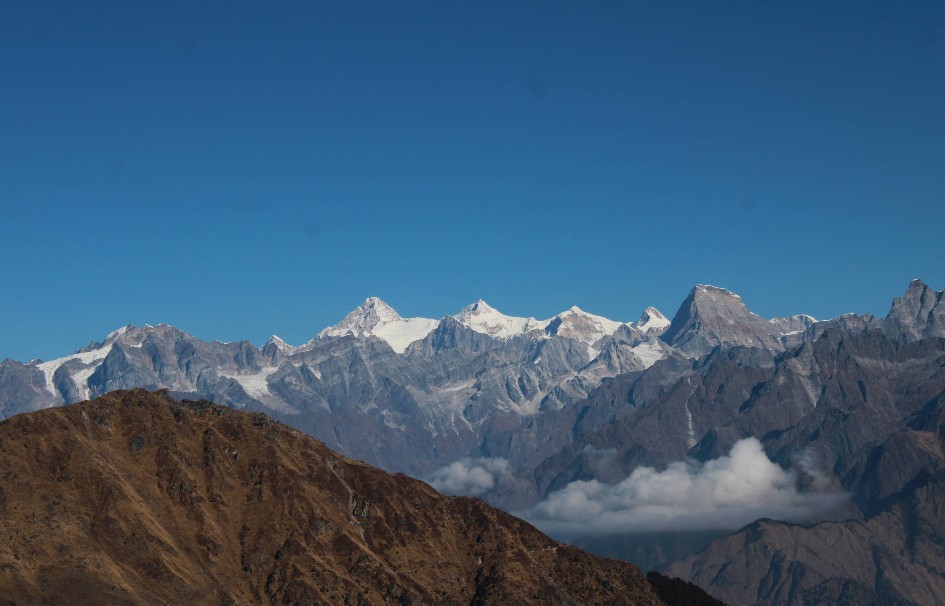
The Kuari Pass Trek, nestled in the Chamoli district of Uttarakhand, is a remarkable journey into the heart of the Garhwal Himalayas. Reaching a maximum altitude of 12,500 ft (3800 m), this 33 km loop trek begins from the village of Dhak, passing through oak forests, alpine meadows, and ridgelines that reveal one of the most breathtaking mountain views in Uttarakhand — including the rare sight of Mt Nanda Devi, India’s second-highest peak.
This trail is ideal for both beginners and experienced trekkers, offering an easy to moderate level of difficulty. The route is full of contrast — from peaceful forest walks and open meadows to panoramic ridges and the exhilarating final climb to Kuari Pass.
During winters, the trail transforms into a snow-covered landscape, offering a classic snow adventure. The snow-laden trails and crisp winter winds make the setting especially enchanting from December to February, when the region is blanketed in white, turning the trek into a real-life winter wonderland.
Every step on this trail brings you closer to iconic Himalayan views, with towering peaks like Dronagiri, Hathi-Ghoda, and Kamet standing tall across the horizon. Whether you're a nature lover seeking silence or an adventurer chasing alpine thrills, Kuari Pass is an unforgettable Himalayan experience — a walk in paradise that shifts with the seasons.
- Region: Garhwal Himalayas
- Max Altitude: 12,516 ft
- Duration: 6 days
- Difficulty: Moderate
- Highlights: Snow-laden pass crossing, panoramic view of Nanda Devi, oak forests
5. Chopta Chandrashila Trek, Uttarakhand
The Chopta Chandrashila Trek is a short yet unforgettable Himalayan journey through snow-covered forests, vibrant rhododendron trails, and panoramic mountain views. This trek takes you to Chandrashila Peak (3,658 m / 12,000 ft), offering a 360-degree view of the Garhwal Himalayas, including Nanda Devi, Trishul, Chaukhamba, and Neelkanth.
Along the way lies Tungnath Temple (3,475 m / 11,400 ft) — the highest Shiva temple in the world and one of the revered Panch Kedar. Its spiritual energy adds a deep sense of peace to the climb.
The trek begins from Sari Village, a quiet hamlet near Rishikesh, and also the base for the scenic Deoriatal Lake. This crystal-clear lake reflects the surrounding peaks and makes for a peaceful start to your adventure.
Each season offers a unique charm. Winter brings fresh snow and serene white landscapes. Spring, especially in March-April, turns the forest pink and red with blooming rhododendrons, and if lucky, you can taste fresh local rhododendron juice.
Whether it’s the golden sunrise from Chandrashila summit, the peaceful trails of Chopta, or the spiritual aura of Tungnath, this trek is an ideal mix of nature, adventure, and tranquility. Perfect for beginners and nature lovers, it’s a Himalayan experience that touches the soul and leaves you wanting more.
- Region: Rudraprayag District
- Max Altitude: 13,000 ft (Chandrashila Peak)
- Duration: 4–5 days
- Difficulty: Easy
- Highlights: Snowy trek to Tungnath Temple, birding in Deoria Tal, best short trek in winter
6. Goechala Trek (Till Dzongri), Sikkim
The Goechala Trek is among the most iconic high-altitude treks in India, renowned for offering breathtaking views of Kanchenjunga, the third-highest mountain in the world. But what truly sets this trek apart is that it doesn’t stop at just one summit — it offers views of 15 towering Himalayan peaks, including Pandim, Kabru, Rathong, and others.
At an altitude of 4,940 meters (16,207 ft), Goecha La is a mountain pass nestled in the Gyalshing district of Sikkim, acting as a base for mountaineers aiming to climb Kanchenjunga. The majestic southeast face of Kanchenjunga seen from the pass is so awe-inspiring that it was chosen to be featured on the Indian Rs.100 note — a testament to its grandeur.
The trail takes you through dense rhododendron forests, alpine meadows, roaring rivers, and serene glacial lakes. The ever-changing landscapes, raw wilderness, and close-up Himalayan views make this trek feel like a true expedition — often compared to the famous Nepalese treks in terms of scale and impact.
If you’re seeking a high-altitude adventure with soul-stirring Himalayan views, Goechala is undoubtedly one of the best treks in India to experience the mountains in their full glory.
- Region: West Sikkim
- Max Altitude: 13,200 ft (Dzongri Top)
- Duration: 7–9 days
- Difficulty: Moderate to Challenging
- Highlights: Stunning sunrise over Kanchenjunga, rhododendron forests, perfect for pro trekkers in early winter (Nov–early Dec)
7. Nag Tibba Trek, Uttarakhand
The Nag Tibba Trek is a fantastic short adventure for anyone seeking a taste of the Himalayas without committing to a long expedition. Located in the Garhwal Himalayas of Uttarakhand, this trek reaches a maximum altitude of 9,915 feet, making it the highest peak in the Nag Tibba range.
Spanning around 18 kilometers in total, the trek is usually completed over two days. Starting from Pantwari village, the trail takes you through dense forests, lush meadows, and tranquil campsites, offering a mix of beauty and serenity throughout the journey.
The summit rewards you with stunning 100-degree views of snow-clad Himalayan giants like Swargarohini, Bandarpoonch, Kala Nag, Srikanth, and Gangotri. On a clear day, you can even spot the Kedarnath peak, the Doon Valley, and the snowy expanse of Changabang.
Ideal for beginners, families, or anyone craving a quick mountain escape, Nag Tibba is one of the best easy treks in Uttarakhand that delivers big mountain views with minimal time investment.
- Region: Near Mussoorie
- Max Altitude: 9,915 ft
- Duration: 2–3 days
- Difficulty: Easy
- Highlights: Ideal weekend trek, snow in peak winter, views of Swargarohini and Bandarpoonch
8. Har ki Dun Trek, Uttarakhand
The Har Ki Dun Trek is one of the most scenic and culturally rich trails in the Indian Himalayas. Nestled in the western Garhwal region of Uttarakhand, this ancient trail offers a beautiful mix of nature, history, and village life, making it a favorite among explorers and culture lovers.
The trek starts from Sankri and stretches around 34 km, taking you through quaint villages like Taluka, Dhatmeer, Gangad, and Osla. These villages have preserved their centuries-old customs, and trekking through them offers a rare chance to witness a 500-year-old culture still alive in its raw form.
As you hike, you'll pass through dense deodar and pine forests, alpine meadows, and cross the Tons River, all while being surrounded by the Govind Wildlife Sanctuary & National Park—home to wildlife like musk deer, Himalayan griffon, black bears, and vibrant birdlife.
The trail culminates at an altitude of 11,600 feet, offering grand views of snow-clad peaks and a valley carved by the Thamsa River. The trek takes around 4 to 5 days and is ideal for those seeking both natural beauty and deep-rooted Himalayan heritage.
Whether it's the untouched charm of the landscape or the rich traditional essence, Har Ki Dun offers a soulful experience unlike any other trek in Uttarakhand.
- Region: Sankri Valley
- Max Altitude: 11,675 ft
- Duration: 7–8 days
- Difficulty: Moderate
- Highlights: Remote valley trek, snow-clad wooden villages, best done in early or late winter
9. Snow Leopard Trek, Ladakh
Snow Leopard Trek of Rumbak Valley in Ladakh is one of the best places in the world to spot the elusive snow leopard, often called the Ghost of the Himalayas. Located in Hemis National Park, this remote valley has earned its title as the Snow Leopard Capital of the World, attracting wildlife enthusiasts, photographers, and nature researchers from around the globe.
Among the five major snow leopard regions in India—Jammu & Kashmir, Himachal Pradesh, Uttarakhand, Sikkim, and Arunachal Pradesh—Rumbak stands out due to its rich biodiversity and high sighting chances. Alongside snow leopards, the valley is home to other rare high-altitude wildlife such as pikas, blue sheep, Tibetan wolves, golden eagles, and brown foxes.
The landscape is dominated by rugged ridges, snow-laden peaks, and frozen tributaries of the Indus River. The trek passes through notable viewing points like Tarbung Valley, Hussing Point, and Rumbak Village—hotspots where snow leopards are often spotted crossing territories or resting in their natural habitat.
This winter-exclusive trek is best experienced between late December and March, when the sub-zero temperatures and fresh snowfall enhance the chances of sightings. However, the weather remains unpredictable, with sudden snowstorms and freezing winds testing your resilience.
Trekking through Rumbak Valley is more than just a wildlife expedition—it's a journey through one of Ladakh’s most surreal and untouched terrains, offering an unforgettable encounter with nature’s most secretive predator.
- Region: Hemis National Park
- Max Altitude: 12,500 ft+
- Duration: 8–12 days
- Difficulty: Moderate to Challenging
- Highlights: Wildlife spotting in harsh winter, chance to see elusive Snow Leopard, expert-only trek (Jan–March)
10. Chadar Trek (Frozen Zanskar River), Ladakh
The Chadar Trek is one of the most iconic and extreme winter treks in India, set deep in the Zanskar Gorge of Ladakh. Known as the Frozen River Trek, it involves walking over the icy surface of the Zanskar River, which transforms into a solid sheet of ice during the peak winter months. For centuries, this frozen river trail served as the only link for Zanskaris to connect with the outside world in winter, making it not only adventurous but culturally significant.
The trek covers a total distance of about 105 kilometers, with trekkers typically walking 10 to 16 kilometers per day through a narrow gorge surrounded by 600-meter-high vertical cliffs. In places, the gorge narrows to as little as 5 meters wide, offering dramatic views throughout.
The trek usually starts from Chilling, but these days, vehicles often drive up to Shingra Koma or Tilad Sumdo (10,390 ft). From there, trekkers move through scenic spots like Tsomo Paldar, Tibb Cave, and finally reach Nerak (11,150 ft), home to the iconic frozen waterfall and the turnaround point for most itineraries. While the classic trek ends at Nerak, extended versions continue all the way to Lingshed or even Padum, taking up to 14 days.
The best time for the Chadar Trek is January to February, when temperatures plummet between -30 to -35 degrees Celsius, ensuring a stable ice surface. This trek is a true test of endurance, mental strength, and cold resistance—but it rewards with unmatched beauty and the thrill of walking over a living, frozen river in the heart of the Himalayas.
- Region: Zanskar Valley
- Max Altitude: 11,000 ft
- Duration: 10-14 days
- Difficulty: Challenging
- Highlights: Walk on a frozen river, icy caves, cultural experience, high risk – high reward adventure
Best Time for Winter Treks in India
- December to March is prime trekking season for snow-lovers
- December & January: Heaviest snowfall, frozen lakes, snow-laden forests
- February: Ideal snow conditions, longer daylight, less crowded trails
- March: Snow starts melting, making treks easier for beginners
Region-Wise Breakdown of Winter Treks
Uttarakhand
- Beginner-friendly: Kedarkantha, Dayara Bugyal, Nag Tibba
- Moderate: Brahmatal, Kuari Pass, Chopta Chandrashila
- Challenging: Har ki Dun (in deep winter), Dodital Darwa Pass combo
Himachal Pradesh
- Triund Snow Trek (short)
- Prashar Lake Trek (snow-covered lake, Jan–Feb)
- Hatu Peak Trek (near Narkanda, lesser-known)
Sikkim
- Dzongri Trek in early winter (Nov–Dec)
- Avoid peak winter due to heavy snow in higher altitudes
Ladakh
- Chadar Trek
- Snow Leopard Trek
- Only for well-acclimatized, experienced trekkers with support
How to Prepare for a Winter Trek
Fitness Level
- Start cardio workouts at least 30–45 days in advance
- Include squats, stair climbing, jogging, brisk walking
- For higher-altitude treks, practice carrying a loaded backpack
Essential Gear
- Waterproof trekking shoes with good grip
- Thermal base layers and fleece jackets
- Down jacket (minimum -10°C)
- Gloves (inner + outer), woolen socks, snow gaiters
- Trekking poles, headlamp, power banks
- Backpack rain cover, sunglasses, lip balm, SPF 50+
Permits and Safety
- Most treks require permits (Govind Sanctuary, Nanda Devi NP, etc.)
- Always go with a guide or group on snow-bound trails
- Acclimatization and hydration are crucial
- Learn how to handle snow blindness, frostbite, and AMS
Who Should Go for Winter Treks
- Beginners: Kedarkantha, Dayara Bugyal, Chopta Tungnath
- Photographers: Brahmatal, Kuari Pass, Prashar Lake
- Snow Lovers: Nag Tibba (quick), Triund (accessible)
- Thrill Seekers: Chadar, Dzongri, Snow Leopard Trek
Things to Keep in Mind
- Weather can turn extreme in minutes – stay updated
- Carry buffer days for roadblocks or snowfall delays
- Mobile networks are often unreliable – inform family
- Respect local culture and avoid littering trails
Final Thoughts
Winter trekking in India isn’t just a seasonal thrill — it’s an invitation to explore the Himalayas at their quietest, calmest, and most beautiful. As you hike through snow-covered landscapes, cross frozen bridges, and rest beneath skies full of stars, every step feels like a walk in paradise.
From gentle hikes for beginners to more challenging snow adventures, winter trails cater to every kind of trekker. Yes, you’ll face biting winter winds, icy climbs, and wide variations in climatic conditions — but the rewards are unforgettable: mesmerizing views, peaceful solitude, and the deep satisfaction of moving through a world wrapped in white.
With the right gear — sturdy hiking boots, a reliable trekking pole, and solid winter prep — you’re all set to discover the best of India’s trekking spots in winter. So if you’re ready to experience the thrill of walking over snow, catching the season’s first snowfall, and losing yourself in a true winter wonderland, now’s the time to pack your bags and hit the trail.Pick your trek wisely, train well, pack smart, and hit the trails!
Top FAQs on Winter Treks in India
1. What are the best months to go on a winter trek in India?
The ideal months are December to February, which are the year’s coldest months and bring consistent snowfall at elevations above 8,000 ft. These months are best for a full snow adventure.
2. Are winter treks suitable for beginners?
Yes, there are many snow-covered easy winter treks like Kedarkantha, Dayara Bugyal, and Nag Tibba, perfect for beginners wanting to walk through snow-laden trails and enjoy a winter wonderland experience.
3. What should I pack for a winter trek in India?
Essential gear includes hiking boots, trekking poles, thermal layers, waterproof gloves, snow gaiters, and awareness of changing weather. Preparation is key due to the variation in the climatic conditions.
4. How cold does it get during winter treks?
Mid-altitude treks average temperatures around 10–15 °C (50–59 °F) during the day, but lowest temperatures in the Indian Himalayas can drop to -10 °C or lower at night due to winter winds.
5. Can I witness snowfall during a winter trek?
Absolutely. Treks like Brahmatal, Kuari Pass, and Chopta Chandrashila offer the chance to witness the snowfall while walking along snow-covered trails through a magical snow blanket landscape.
6. Are the trails safe for solo winter trekking?
Not recommended. Due to snow-covered paths, extreme weather, and frozen water streams, always trek with an experienced guide or group, especially in snow-laden forests.
7. What makes winter treks unique compared to other seasons?
It’s the snow-laden trails, serene landscapes, fewer crowds, and the feeling of hiking in a walk in paradise. The Himalayas in winters offer a peaceful yet raw experience unlike any other time of the year.
Written By:
Mountains Curve



Hotels at your convenience
Now choose your stay according to your preference. From finding a place for your dream destination or a mere weekend getaway to business accommodations or brief stay, we have got you covered. Explore hotels as per your mood.
